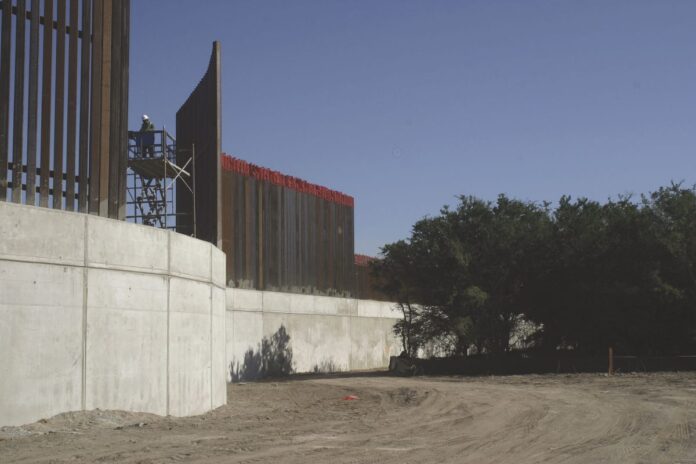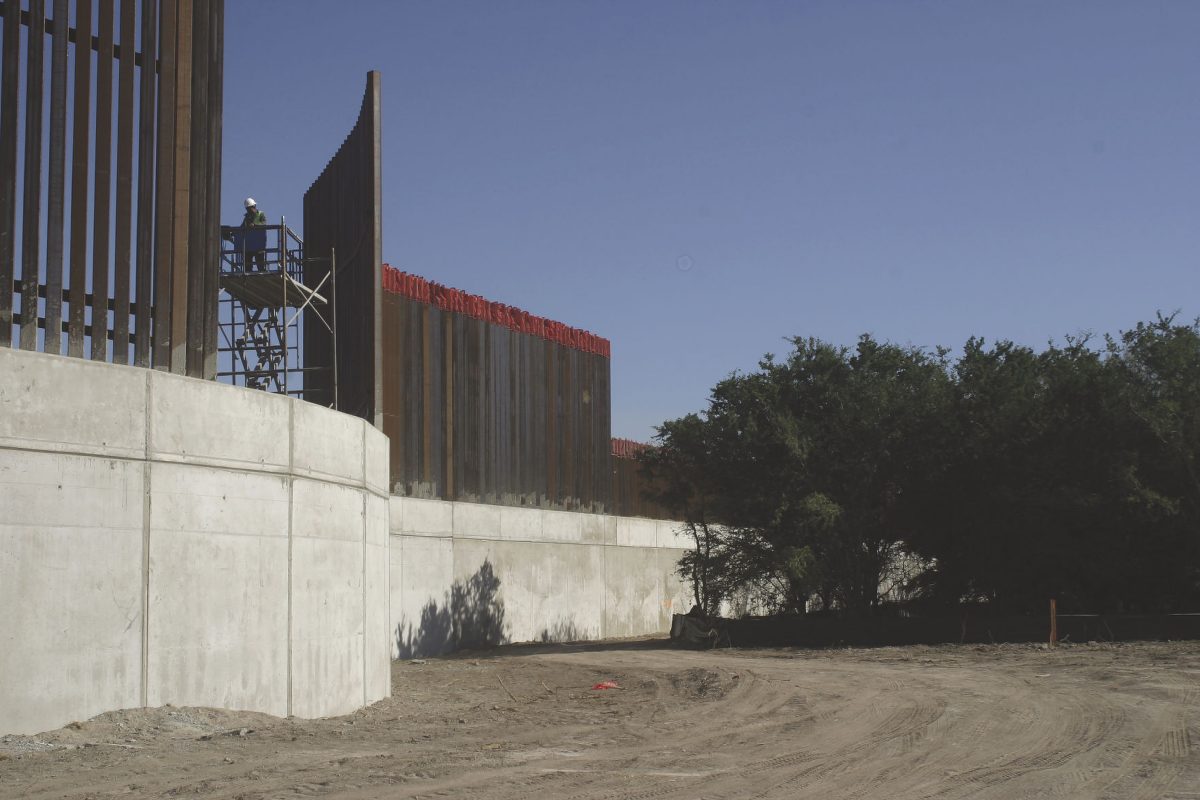
BY STEFANIE HERWECK AND SCOTT NICOLS
Our fight to stop the border wall in the Rio Grande Valley just got harder.
Last week, Congress passed a budget bill that gives the Trump administration a billion and a half dollars for border walls, but does absolutely nothing to protect Dreamers.
The new law provides “$445,000,000 for 25 miles of primary pedestrian levee fencing along the southwest border in the Rio Grande Valley Sector,” according to the Omnibus bill language.
Ever since Hidalgo County Judge Ramon Garcia and McAllen Mayor Jim Darling last year wrote to the secretary of Homeland Security suggesting levee-border walls, the Trump administration has been pushing the idea of turning all of Hidalgo County’s existing Rio Grande levees into levee-border walls. In 2009, 22 miles of our levees were turned into levee-border walls, and the scheme Garcia and Darling promoted would have converted the remaining 28 miles. With the three miles of the Santa Ana National Wildlife Refuge in Alamo protected from a border wall, that leaves 25 miles, the exact amount in the bill.
The result will likely be a 50-mile-long levee-border wall with a three mile wide hole at Santa Ana. Except for Santa Ana, Hidalgo County residents would be cut off entirely from the Rio Grande.
If built, these levee-border walls will tear through the National Butterfly Center in Mission. Bentsen Rio Grande State Park and World Birding Center, in Mission, also will be cut off from all of its trails. More tracts of the Lower Rio Grande Valley National Wildlife Refuge, in Santa Rosa, will be walled off. An 18-foot-tall concrete slab will tower over the historic La Lomita Chapel in Mission. Patrons of the Riverside Club and residents of the Chimney Park RV Resort, in Mission, will have to cross the border wall. And hundreds of acres of family farms will be behind these walls in “no-man’s land.”
We know exactly what these levee-border walls will look like because the budget bill only allows for wall designs that have previously been deployed, an explicit rejection of Trump’s California prototypes.
If so, the river-facing side of existing flood control levees will be torn away, and instead of a gentle slope there will be an 18-foot vertical concrete slab. To access “no-man’s land” there will be ramps, and where there are ramps there will be massive gates with 18-foot-tall steel walls on either side.
Levee-border walls are an environmental disaster. While people have little difficulty using homemade ladders to get over them, animals are stopped in their tracks. Not only does this fragment territory that is critical to ocelots and other terrestrial species but when the river swells during a flood, instead of walking up and over the gentle slope of the levee, wildlife — from rabbits to snakes to javelinas to ocelots — will be trapped and drown.
In addition to funding levee-border walls, the bill gives Trump “$196,000,000 for primary pedestrian fencing along the southwest border in the Rio Grande Valley Sector” without specifying a design, length, or exact location.
These will likely hit communities in Starr County, in the vicinity of Roma and/or Rio Grande City and/or La Grulla, where the administration had been pushing for 32 miles of new border wall. A bollard design like the one used in Cameron County — 18-foot-tall steel posts spaced four inches apart — will likely be deployed.
Starr County does not have levees along the Rio Grande, and if these walls follow the routes depicted on U.S. Customs and Border Protection maps that were released last summer, they will repeatedly intrude into the river’s flood plain. During big rain events water that would normally drain out of towns and farms into the river will be blocked by these walls, worsening and prolonging flooding.
When the Rio Grande swells beyond its banks walls may also deflect floodwater, pushing it deeper into cities on the Mexican side. That is a treaty violation. Neither nation is permitted to build structures that could worsen cross-border flooding.
The fact that Congress felt compelled to save Santa Ana by explicitly forbidding walls there is a clear demonstration that activism can have an impact. Last summer hundreds of people linked hands on the levee that President Donald Trump wanted to turn into a wall, and in January more than 800 came out for the Save Santa Ana Rally. In between, members of Congress received hundreds of postcards, letters, emails and phone calls, and Valley residents repeatedly traveled to Washington, D.C., to let them know that those of us who live along the border oppose border walls.
But Congress missed the bigger message: We reject all border walls, not just the stretch that would target Santa Ana Wildlife Refuge.
That is why we need to redouble our efforts. If we are united, if we are strategic, and if we work our butts off, we can stop the walls that Congress just funded. There is no time to celebrate saving Santa Ana if we are to save La Lomita, save the National Butterfly Center, save Bentsen Rio Grande State Park, save family farms that these levee-border walls will tear apart, and save the communities that walls in the floodplain will put at risk.







